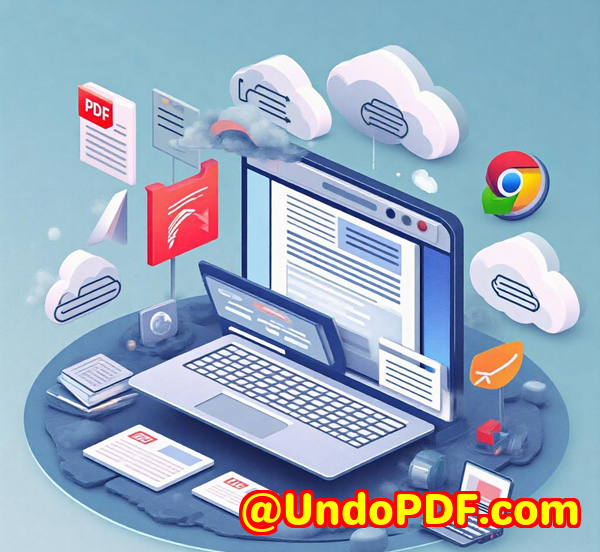Convert DOCX to PDF While Preserving Layout and Fonts Using imPDF DOCX Converter
Convert DOCX to PDF While Preserving Layout and Fonts Using imPDF DOCX Converter
Every time I had to convert a complex DOCX file to PDF, I’d cringe a little inside. You know the feeling: you spend hours perfecting your documentfonts, margins, tables, imagesonly to have everything go sideways after conversion. Text shifts, fonts disappear or get replaced, and layouts break. It’s frustrating, especially when the final PDF is what you need for client submissions, legal documents, or polished presentations.

This is exactly why I started looking for a better solution. I needed a tool that not only converted DOCX files to PDF but also preserved every detail flawlessly. That’s when I came across imPDF DOCX Converter, part of the imPDF PDF REST APIs for Developers. It wasn’t just another converterit was built to keep the layout and fonts intact, making my life way easier.
Why imPDF DOCX Converter Stands Out
imPDF’s DOCX to PDF conversion API is designed specifically for developers and teams that require accurate, reliable document conversion in automated workflows.
Here’s what impressed me right off the bat:
-
Layout Preservation: Complex formatting like tables, columns, headers, footers, and images stay exactly where they belong.
-
Font Embedding: No more font substitutions or missing fonts it embeds fonts properly, so PDFs look like the original DOCX.
-
Scalable Automation: Whether you’re converting one document or thousands, the REST API handles batch processing smoothly.
It’s perfect for developers working on document management systems, legal tech platforms, or any software where document fidelity matters.
How I Used imPDF to Solve Real Problems
I remember one project where our legal team had hundreds of DOCX contracts that needed converting to PDFs for digital archiving and client delivery. Before imPDF, conversions were a mess:
-
Fonts often defaulted to Times New Roman or Arial, ruining brand consistency.
-
Tables and bullet points misaligned, making contracts look unprofessional.
-
Manual fixes after conversion ate up hours every week.
After integrating imPDF DOCX Converter into our workflow, everything changed:
-
Seamless Integration: The REST API was simple to call from our Python backend. Just send the DOCX file, and the PDF came back ready to use.
-
Consistent Results: Each contract PDF perfectly mirrored the original DOCX fonts, layouts, graphics, everything.
-
Huge Time Saver: No more manual checks or reformatting. We automated the whole process and cut conversion time by 80%.
The API even offers instant validation via their online API Lab, so I could test the conversion before coding it in. That saved a lot of trial and error.
Key Features That Make a Difference
-
Cloud-Based and Language-Agnostic: Because it’s a REST API, you can use it with any programming languagePython, JavaScript, Java, C#, you name it. No need to install bulky software locally.
-
Comprehensive Document Support: Aside from DOCX to PDF, imPDF supports tons of other conversionsPDF to Word, Excel, HTML, images, and more. This flexibility meant we could handle multiple document formats with a single platform.
-
Advanced PDF Editing Tools: Beyond conversion, the APIs allow merging, splitting, watermarking, and even securing PDFs with encryption. That meant we didn’t need separate tools for common PDF manipulations.
-
Robust Security: Documents stay private with encrypted transfers and cloud security protocols, which is essential for sensitive legal files.
What I Compared It Against
Before settling on imPDF, I tested other DOCX to PDF converters:
-
Microsoft Word’s Export: Reliable for simple docs but struggles with complex layouts and doesn’t scale well for automation.
-
Open Source Libraries: Often require custom tweaking, and still the output isn’t perfectespecially for fonts and tables.
-
Online Conversion Sites: Convenient but risky for confidential documents, and limited in automation capabilities.
imPDF’s cloud API strikes a great balancepowerful, secure, and easy to integrate, especially if you want precise control over document output.
Who Will Benefit the Most?
-
Developers building document-heavy apps: Automate DOCX to PDF conversion without losing style or structure.
-
Legal and finance teams: Preserve contract and report formatting for compliance and client presentations.
-
Marketing and publishing: Convert editorial content, brochures, and proposals with brand fonts intact.
-
Educational platforms: Deliver course materials and certificates as beautifully formatted PDFs.
Wrapping It Up
If you’re tired of spending hours fixing botched DOCX to PDF conversions or juggling multiple tools, imPDF’s DOCX Converter API is a game changer.
It keeps everything exactly as you designed itfonts, layouts, tables, imagesand it integrates seamlessly into your existing workflows.
I’d highly recommend this to anyone who needs reliable DOCX to PDF conversion without compromises. For me, it freed up time and eliminated a huge source of document headaches.
Ready to see for yourself? Start your free trial now and boost your productivity: https://impdf.com/
Custom Development Services by imPDF.com Inc.
Beyond their powerful REST APIs, imPDF.com Inc. offers tailored development services to help you meet specific PDF processing challenges.
Whether you need tools for Linux, Windows, macOS, or mobile, their experts build custom solutions using Python, PHP, C/C++, .NET, JavaScript, and more.
They specialise in:
-
Creating Windows Virtual Printer Drivers that generate PDFs, EMFs, and images.
-
Monitoring and capturing print jobs across all Windows printers.
-
Developing API hooks to intercept Windows file access.
-
Handling diverse document formats, from PDF and PCL to Office and Postscript.
-
Barcode recognition, OCR, and layout analysis for scanned documents.
-
Secure PDF features, digital signatures, DRM protection, and font management.
-
Cloud-based document workflows, conversion, viewing, and e-signature solutions.
If you’ve got a unique project or need a custom PDF processing workflow, their support team is ready to help: https://support.verypdf.com/
FAQs
Q: Can imPDF DOCX Converter preserve custom fonts in PDFs?
A: Yes, it embeds fonts directly into the PDF, ensuring your document looks identical to the original DOCX.
Q: Is the imPDF DOCX to PDF API suitable for batch processing?
A: Absolutely. It’s designed for high-volume conversions and can be integrated into automated workflows.
Q: Do I need to install any software locally to use imPDF?
A: No, it’s a cloud-based REST API, so you only need internet access and your programming environment.
Q: What programming languages support imPDF’s REST APIs?
A: imPDF supports virtually all languages including Python, JavaScript, Java, C#, PHP, and many more.
Q: How secure is the document conversion process?
A: imPDF uses encrypted transfers and follows strict security protocols to keep your files safe.
Tags/Keywords
DOCX to PDF conversion, preserve document layout, font embedding PDF, automated DOCX converter, imPDF REST API, legal document PDF conversion, batch document processing, PDF conversion API, developer PDF tools, document automation software



